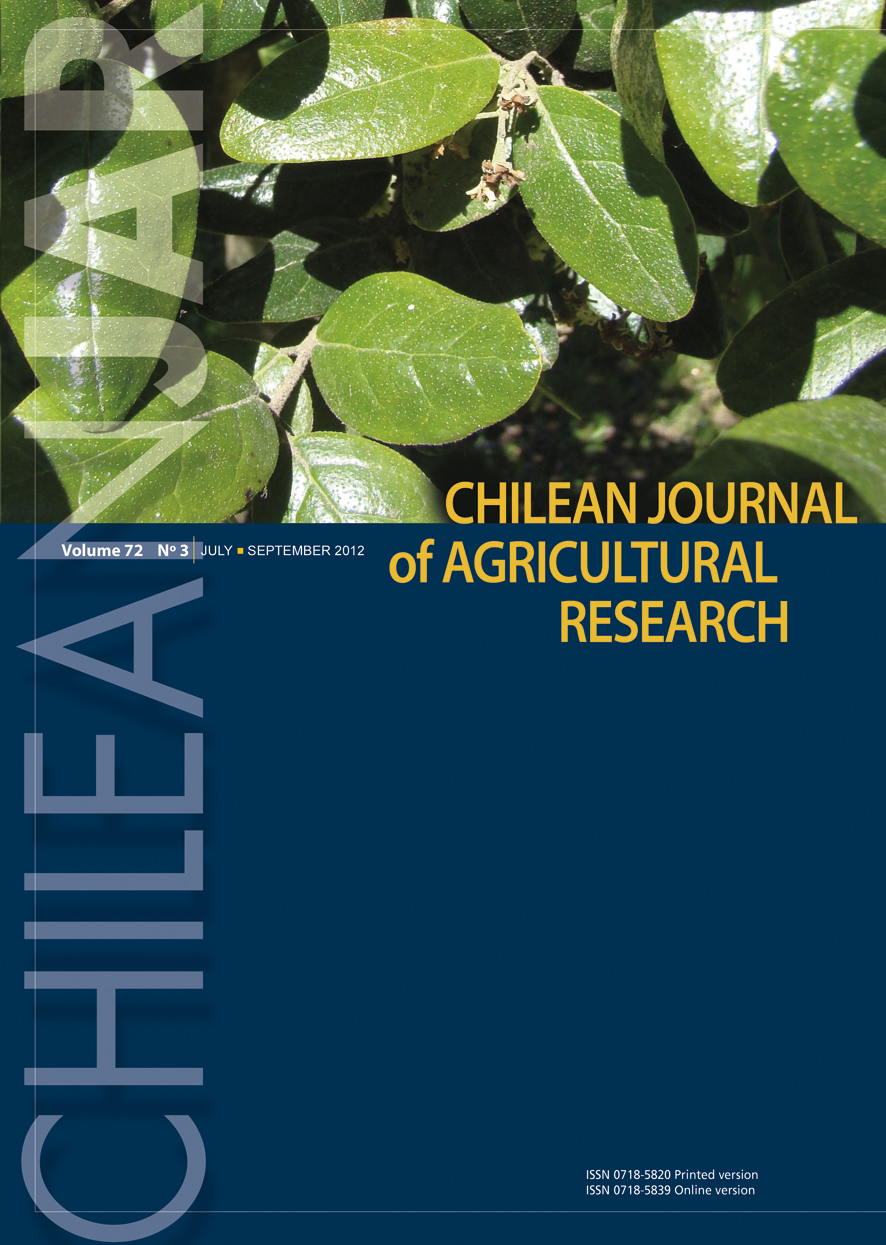
|
Chilean Journal of Agricultural Research
Instituto de Investigaciones Agropecuarias, INIA
ISSN: 0718-5820
EISSN: 0718-5820
Vol. 71, No. 2, 2011, pp. 323-328
|
 Bioline Code: cj11038
Bioline Code: cj11038
Full paper language: English
Document type: Note
Document available free of charge
|
|
|
Chilean Journal of Agricultural Research, Vol. 71, No. 2, 2011, pp. 323-328
| en |
Kipa-INIA, New High Yield Spring Bread Wheat Variety For Chile
Matus, Iván; Madariaga, Ricardo; Jobet, Claudio; Zúñiga, Javier & Alfaro, Christian
Abstract
Kipa-INIA is a spring wheat variety ( Triticum aestivum

L.) originated from a cross carried out in the Wheat Plant Breeding Project of the Instituto de Investigaciones Agropecuarias (INIA), in the Centro Regional de Investigación Quilamapu (36°31’ S; 71°54’ W) in 1993. It has an upright growth habit in the seedling stage. The adult plant is low to medium height and varies between 90 and 95 cm. The spike is white with long awns along its full length. The grain is ovate, white, and vitreous. It was sown in mid-August in the Santa Rosa Experimental Field, Chillán, head emergence occurred 90 to 95 d after sowing, i.e. is 4 to 6 d before ‘Domo-INIA’. On the mean, ‘Kipa-INIA’ sown under irrigation conditions reached a yield of 11.7% higher than the control var. Domo-INIA, and 18.1% higher in dryland soils.
spring wheat, Triticum aestivum, new cultivar, Kipa-INIA
|
| |
| es |
Kipa-INIA, nueva variedad de trigo harinero de primavera de alto rendimiento para Chile
Matus, Iván; Madariaga, Ricardo; Jobet, Claudio; Zúñiga, Javier & Alfaro, Christian
Resumen
Kipa-INIAes un trigo harinero ( Triticum aestivum

L.) de primaveraque proviene de un cruzamiento efectuado el año 1993 en el Proyecto de Fitomejoramiento de Trigo del Instituto de Investigaciones Agropecuarias (INIA), en el Centro Regional de Investigación Quilamapu. Es un trigo con hábito de crecimiento erecto al estado de plántula. La altura de la planta adulta se considera mediana, y varía entre 90 y 95 cm. La espiga es de color blanco, de barbaslargas presentes en toda su extensión. El grano es de color blanco, aspecto vítreo, y forma ovada. Sembrado a mediados de agosto en el Campo Experimental Santa Rosa (36°31’ S; 71°54’ O), Chillán, la emisión de espigas ocurre 90 a 95 días después de la siembra, entre 4 a 6días antes que ‘Domo-INIA’. En promedio sembrado bajo condiciones de riego, ‘Kipa-INIA’ alcanzó un rendimiento medio 11,7% mayor que la variedad testigo Domo-INIAy en suelos de secano tuvo un rendimiento superior de un 18,1% respecto de ‘Domo-INIA’.
trigo de primavera, Triticum aestivum, nuevo cultivar, Kipa-INIA.
|
| |
© Copyright 2010 Chilean Journal of Agricultural Research.
Alternative site location: http://www.inia.cl
|
|
